All integration tests are in this module.
Now integration testing supports three modes, the Local Standalone mode, the Cluster mode and the Remote mode.
Integration testing with local standalone mode can be run with both maven and IDEs like IntelliJ.
If you want to run all tests include UT and IT, the maven command is:
mvn clean verify -P '!testcontainer,!influxdb-protocol'
Optionally, you can also only run IT, the maven command is:
mvn clean verify -Dsession.test.skip=true -Diotdb.test.skip=true -Dcluster.test.skip=true -Dtsfile.test.skip=true -pl integration -am
And if you want to run IT in the IDE like IntelliJ, you need to achieve the effect as the LocalStandalone profile in maven. Follow Steps 1-4 to achieve it.
Step 1. Run(Menu) -> Edit Configurations...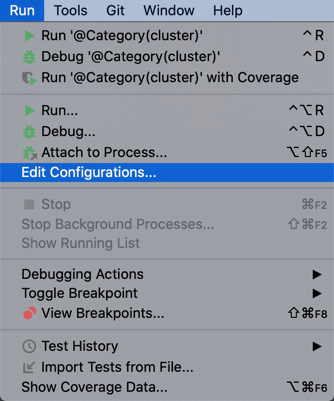
Step 2. Add New Configuration -> JUnit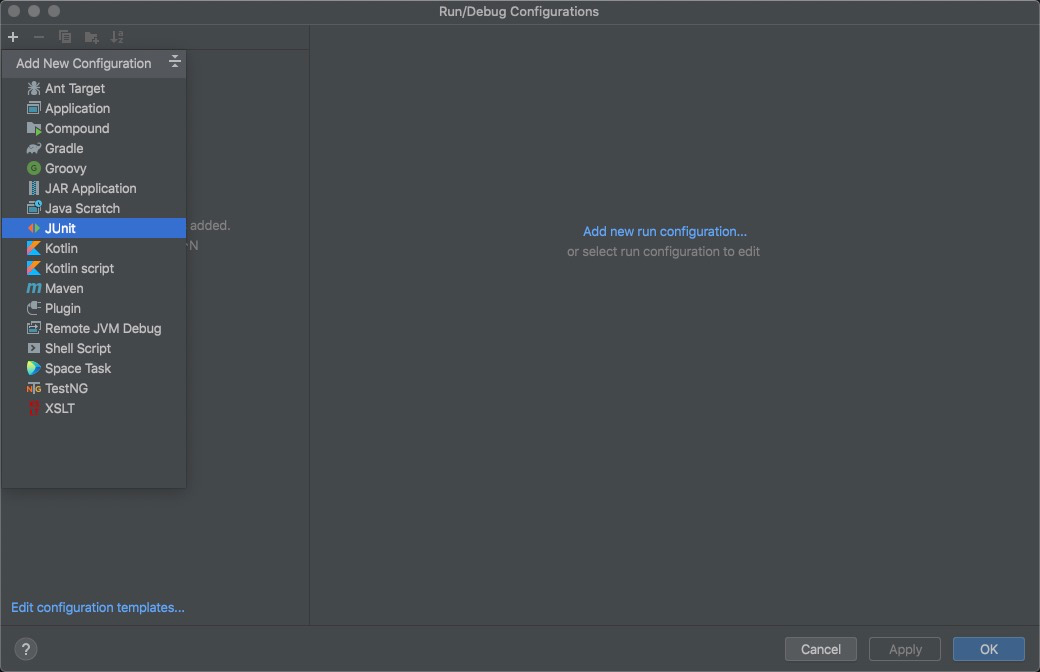
Step 3. Input some fields as the following picture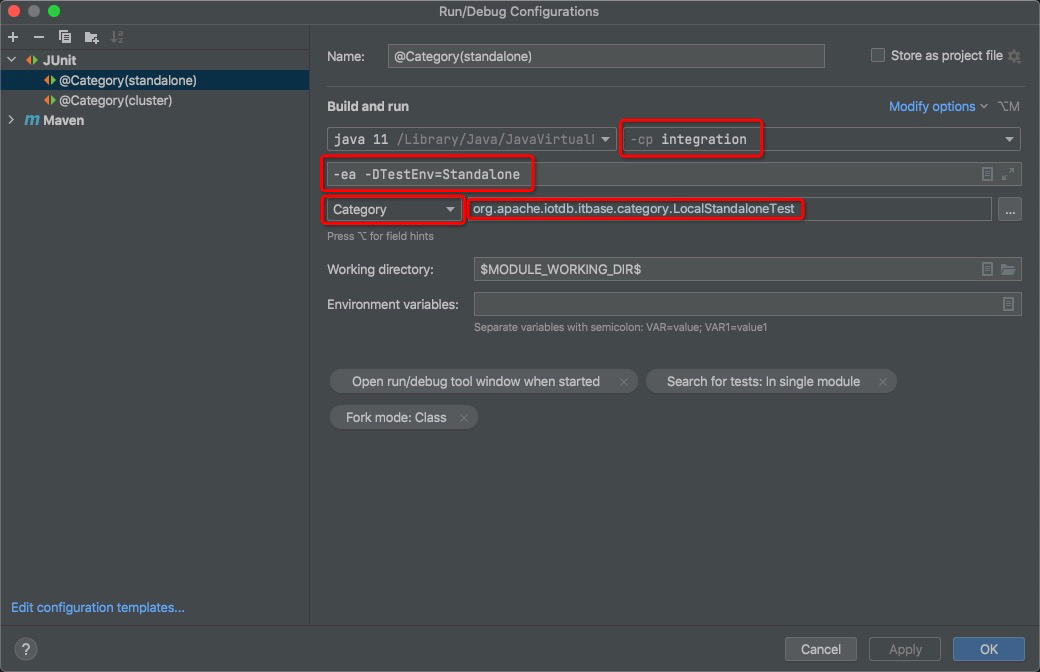
Step 4. Pay attention to the Fork mode in Modify options: you need to change None to class in Fork mode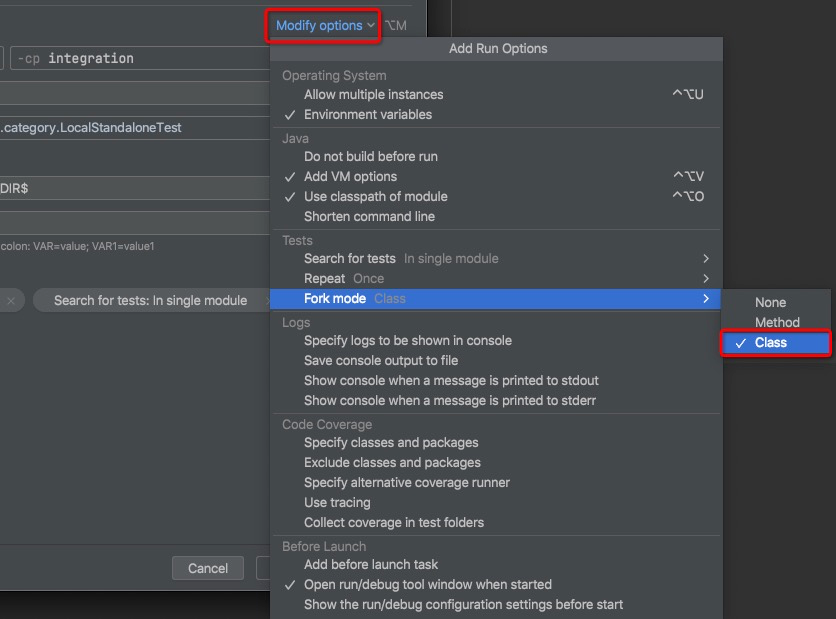
You can also run the integration test in cluster mode. At present, we have implemented a pseudo cluster with five nodes. (As the test cases and the test environment are decoupled, we can easily implement a three-node cluster or even a docker-based cluster later.)
The maven command is:
mvn clean verify -Dsession.test.skip=true -Diotdb.test.skip=true -Dcluster.test.skip=true -Dtsfile.test.skip=true -pl integration -am -PCluster
Run in IntelliJ in cluster mode is so easy as the Local Standalone Mode above,
integration/target/template-node for nodes of the pseudo cluster.mvn clean package -pl integration -am -DskipTests -PCluster
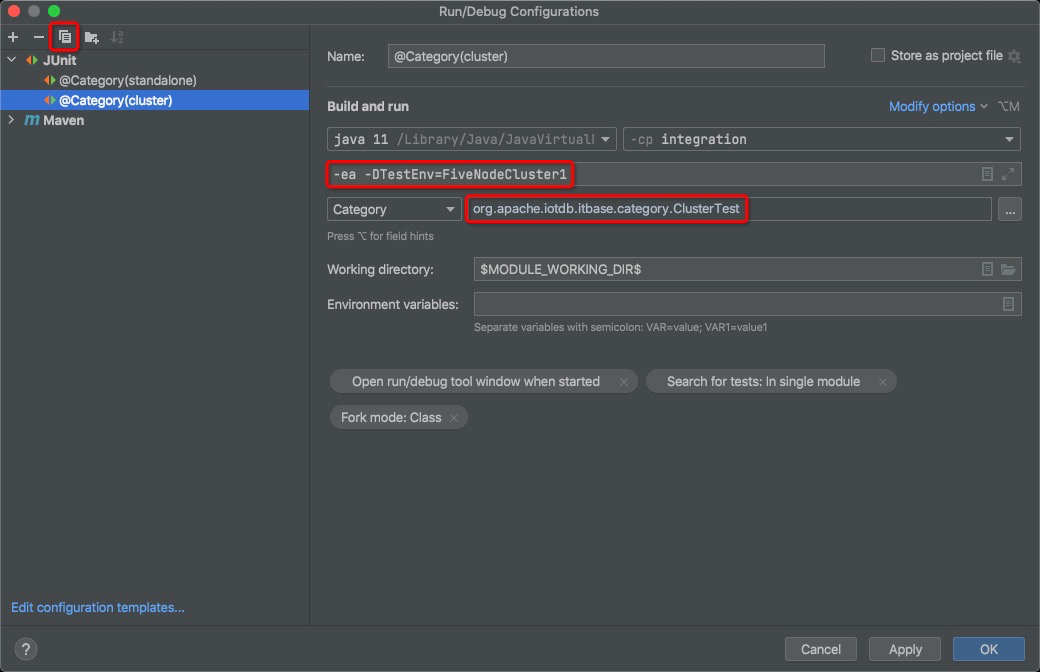
You can also run the integration test in remote mode. The remote server can be a standalone server or a server of a cluster.
The maven command is:
mvn clean verify -pl integration -am -PRemote -DRemoteIp=127.0.0.1 -DRemotePort=6777
For every end-user functionality provided by IoTDB, we should have an integration test verifying the correctness.
@Category on the class or the test levelYou can put the annotation @Category({LocalStandaloneTest.class, ClusterTest.class, RemoteTest.class}) on the class or the test level. And you can use these annotations individually or in combination.
LocalStandaloneTest.class stands for you want your test run in the local standalone mode.
ClusterTest.class stands for you want your test run in the cluster mode.
RemoteTest.class stands for you want your test run in the remote mode.